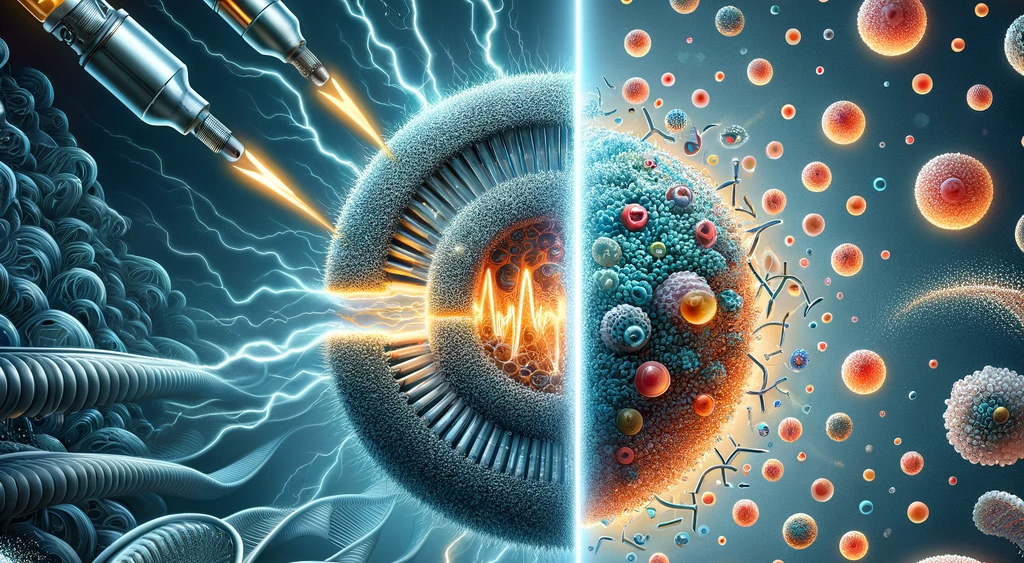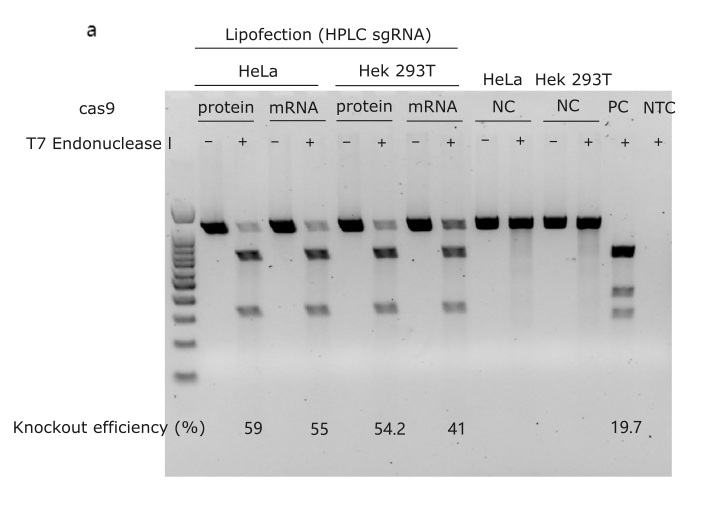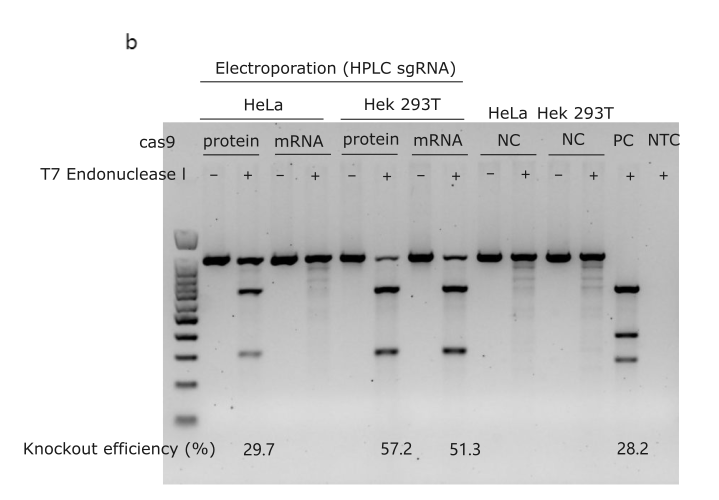
Cell transfection techniques are commonly used in biological research to effectively introduce exogenous DNA, RNA, or proteins into cells for purposes such as gene editing and protein expression. Electroporation and lipofection are two common transfection methods that play important roles in the field of cell transfection. Electroporation utilizes brief high-voltage pulses to increase the permeability of cell membranes, allowing exogenous DNA or RNA to enter the cells, while lipofection involves the formation of complexes between lipids and exogenous DNA or RNA, which then bind to the cell membrane and are engulfed by the cell, facilitating the entry of exogenous molecules into the cytoplasm. This study aims to compare the knockout efficiency of these two transfection methods for Cas9 protein and mRNA in 293T and Hela cells to reveal the impact of different transfection methods on gene editing efficiency in two cell types.
In this experiment, Cas9 protein and mRNA were transfected into 293T and Hela cells using electroporation and lipofection methods. After transfection, the cells were cultured for two days before cell collection. Subsequently, a series of validation experiments, including PCR and sequencing, were conducted to analyze and verify the knockout efficiency.
Following lipofection, a series of validation experiments were performed on 293T and Hela cells. The results showed that both Cas9 protein and mRNA could be successfully transfected into both cell types. The knockout efficiency for Cas9 protein in 293T cells and for both Cas9 protein and mRNA in Hela cells ranged from 50% to 60%, while the knockout efficiency for mRNA in 293T cells was 41%.

Figure 1. Transfection with lipofection to edit the B2M gene using CAS9 protein and cas9 mRNA in Hela and 293 cells, with results presented on a 2% agarose gel. NC represents the negative control, PC represents the positive control, NTC stands for the no-template control, and + and - indicate the presence or absence of T7 endonuclease cleavage.
For electroporation, the results showed that mRNA transfection was unsuccessful in Hela cells, with a knockout efficiency of 29.7% for Cas9 protein in Hela cells. The knockout efficiency for both Cas9 protein and mRNA in Hela cells was lower for electroporation compared to lipofection. However, for Cas9 protein and mRNA transfected into 293T cells, the knockout efficiency ranged from 50% to 60%. For 293T cells, the knockout efficiency of Cas9 protein was similar between electroporation and lipofection, while for mRNA transfection, the knockout efficiency of lipofection was lower than that of electroporation.

Figure 2: Transfection with electroporation to edit the B2M gene using CAS9 protein and cas9 mRNA in Hela and 293 cells, with results presented on a 2% agarose gel. NC represents the negative control, PC denotes the positive control, NTC stands for the no-template control, while - and + indicate whether T7 endonuclease cleavage has occurred.
These results indicate that the transfection method and cell type significantly affect gene editing efficiency. Lipofection exhibits higher knockout efficiency in Hela cells, while the efficacy of electroporation is limited by cell type and the transfected substance. Therefore, when conducting gene editing experiments, it is important to select the appropriate transfection method based on experimental requirements and cell characteristics.

